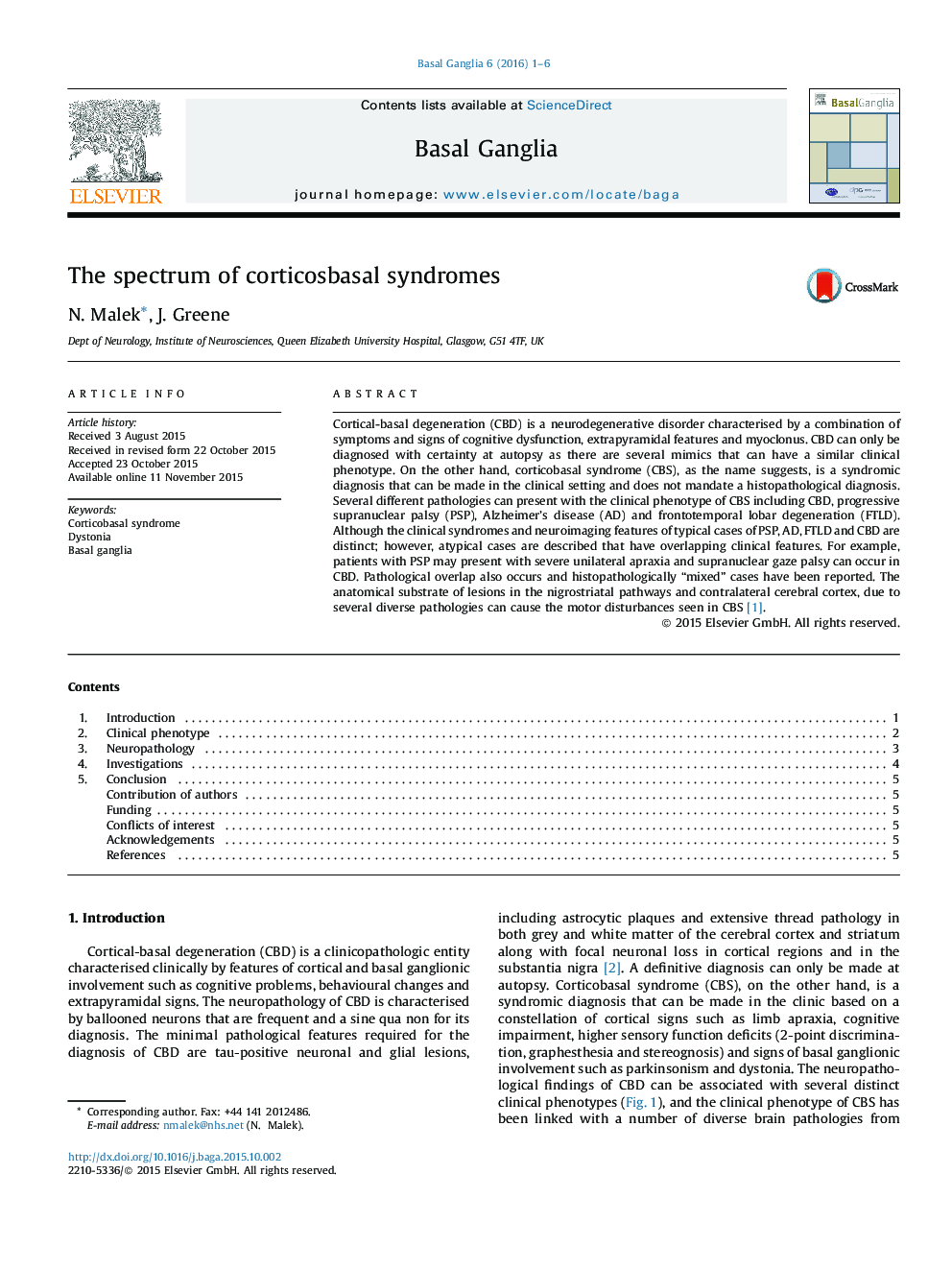| Article ID | Journal | Published Year | Pages | File Type |
|---|---|---|---|---|
| 3035992 | Basal Ganglia | 2016 | 6 Pages |
Abstract
Cortical-basal degeneration (CBD) is a neurodegenerative disorder characterised by a combination of symptoms and signs of cognitive dysfunction, extrapyramidal features and myoclonus. CBD can only be diagnosed with certainty at autopsy as there are several mimics that can have a similar clinical phenotype. On the other hand, corticobasal syndrome (CBS), as the name suggests, is a syndromic diagnosis that can be made in the clinical setting and does not mandate a histopathological diagnosis. Several different pathologies can present with the clinical phenotype of CBS including CBD, progressive supranuclear palsy (PSP), Alzheimer's disease (AD) and frontotemporal lobar degeneration (FTLD). Although the clinical syndromes and neuroimaging features of typical cases of PSP, AD, FTLD and CBD are distinct; however, atypical cases are described that have overlapping clinical features. For example, patients with PSP may present with severe unilateral apraxia and supranuclear gaze palsy can occur in CBD. Pathological overlap also occurs and histopathologically “mixed” cases have been reported. The anatomical substrate of lesions in the nigrostriatal pathways and contralateral cerebral cortex, due to several diverse pathologies can cause the motor disturbances seen in CBS [1].
Related Topics
Life Sciences
Neuroscience
Neurology
Authors
N. Malek, J. Greene,
